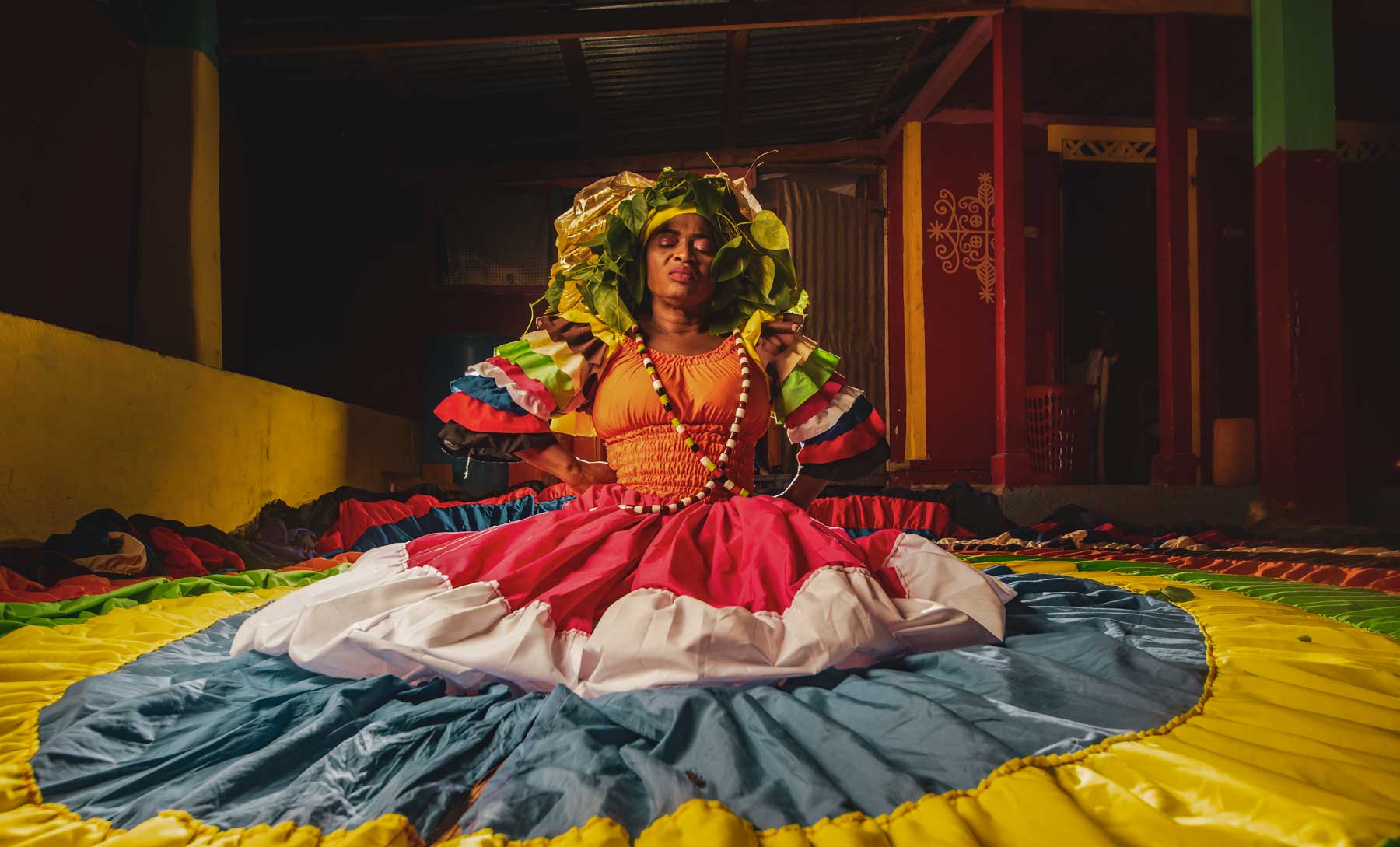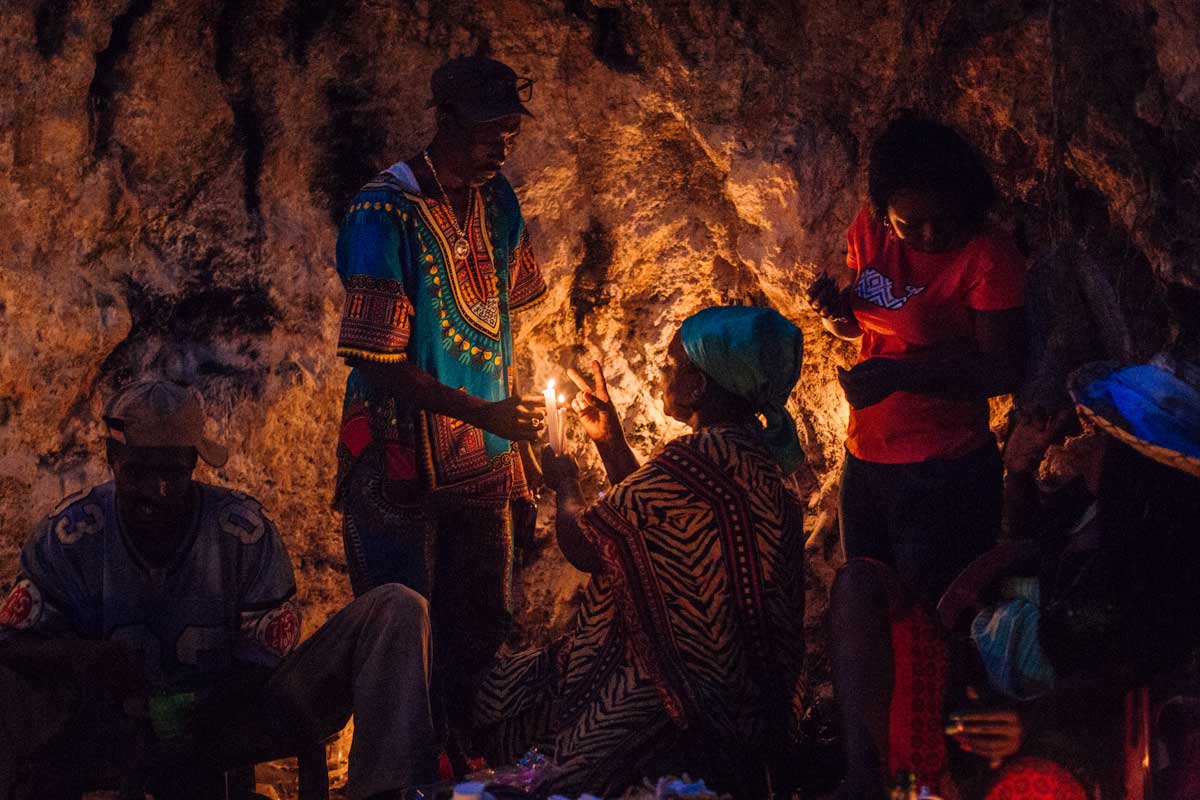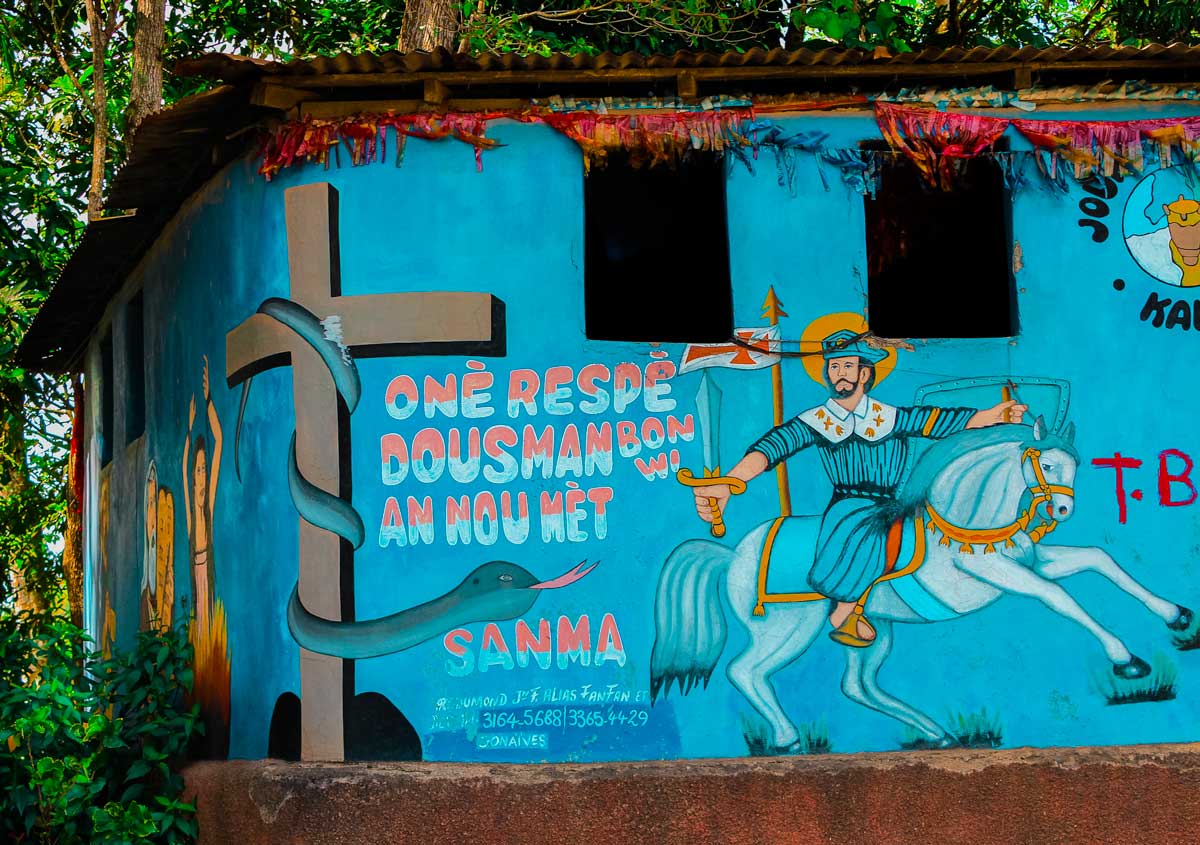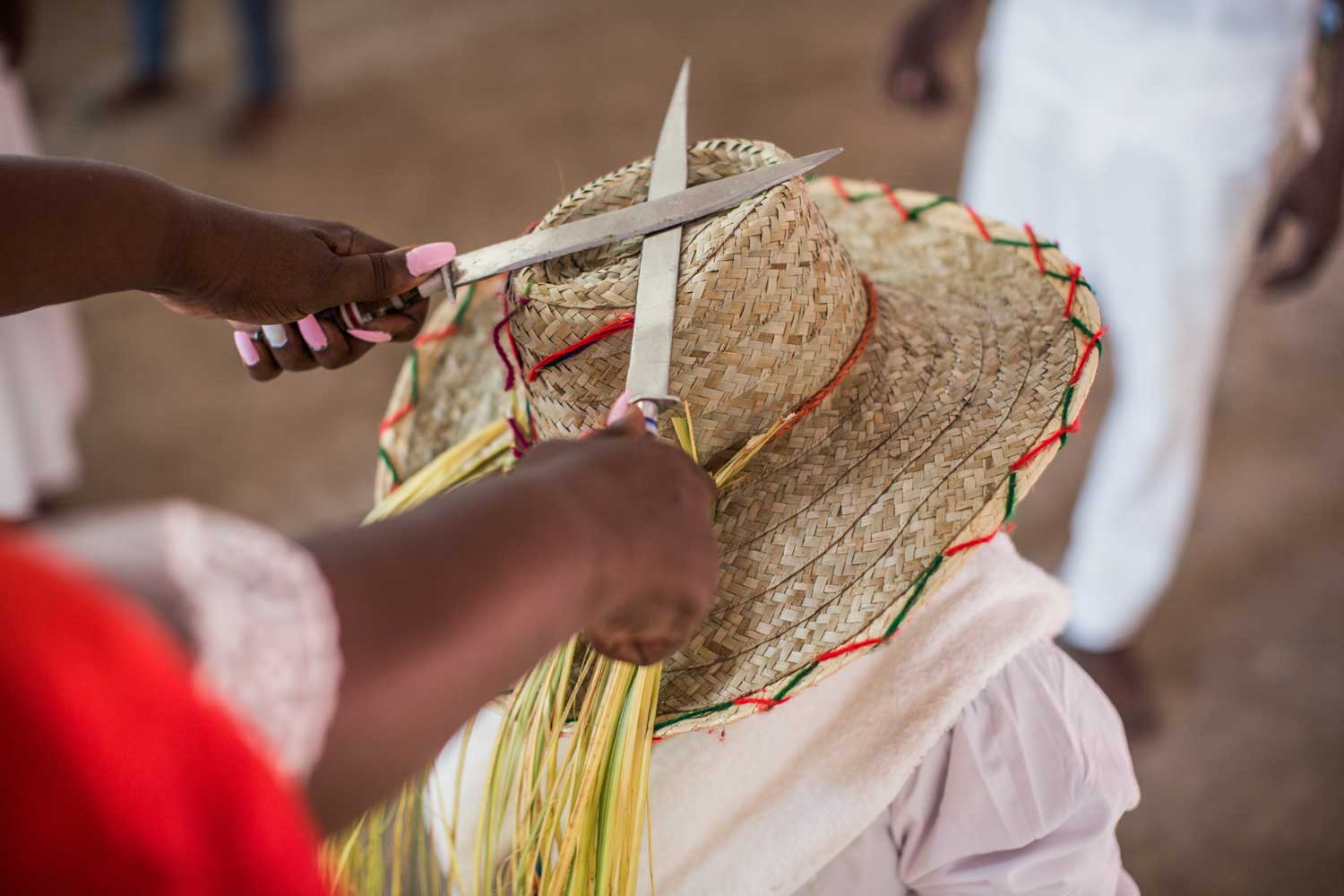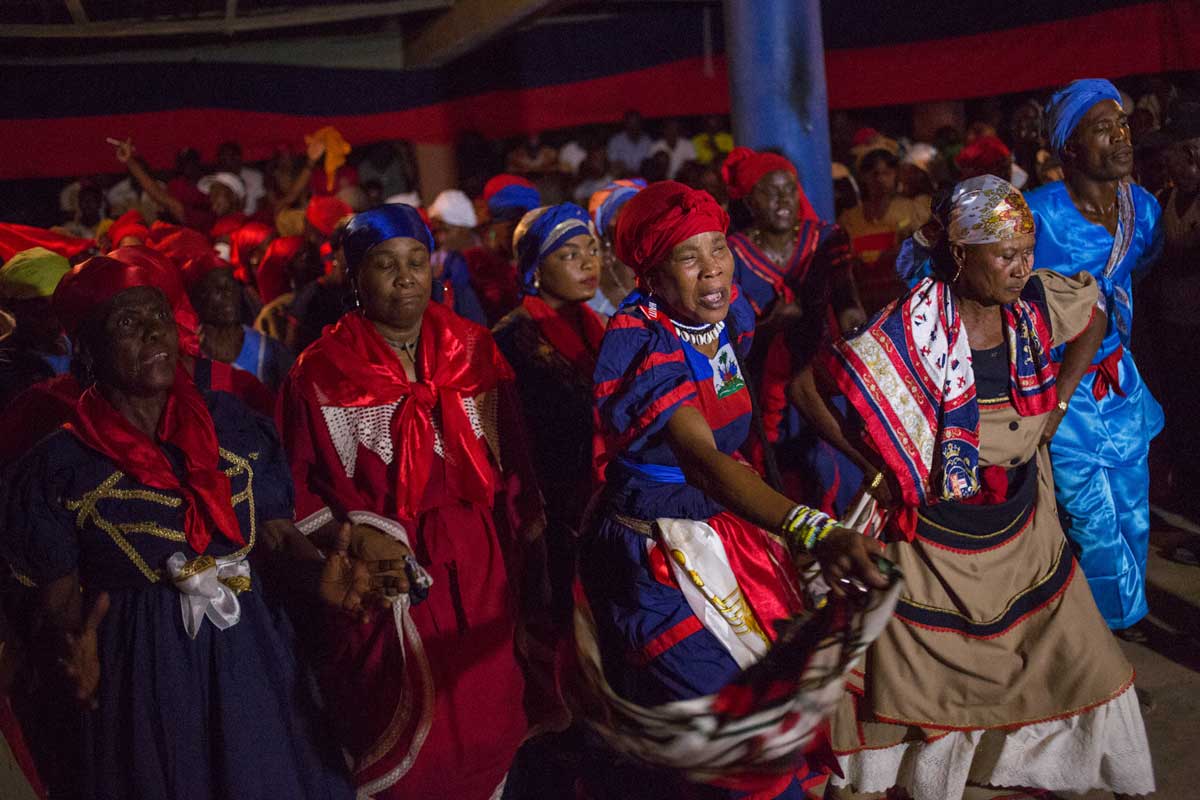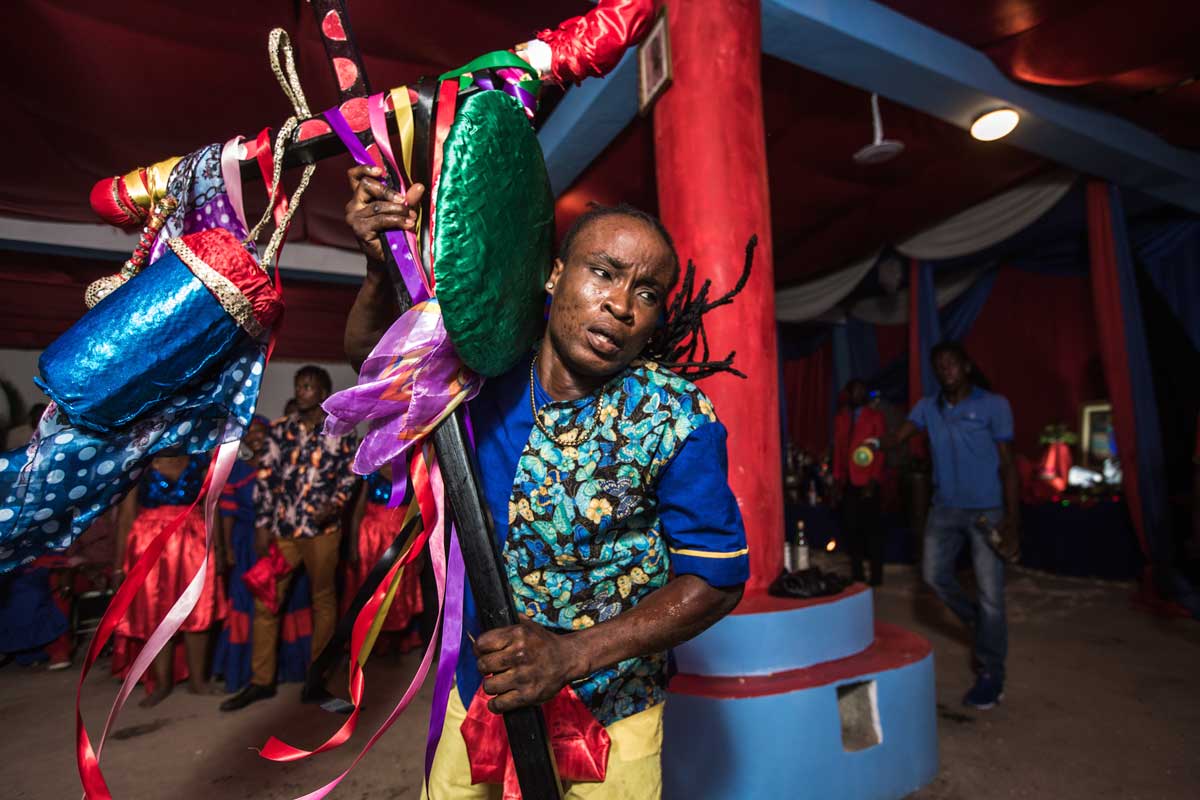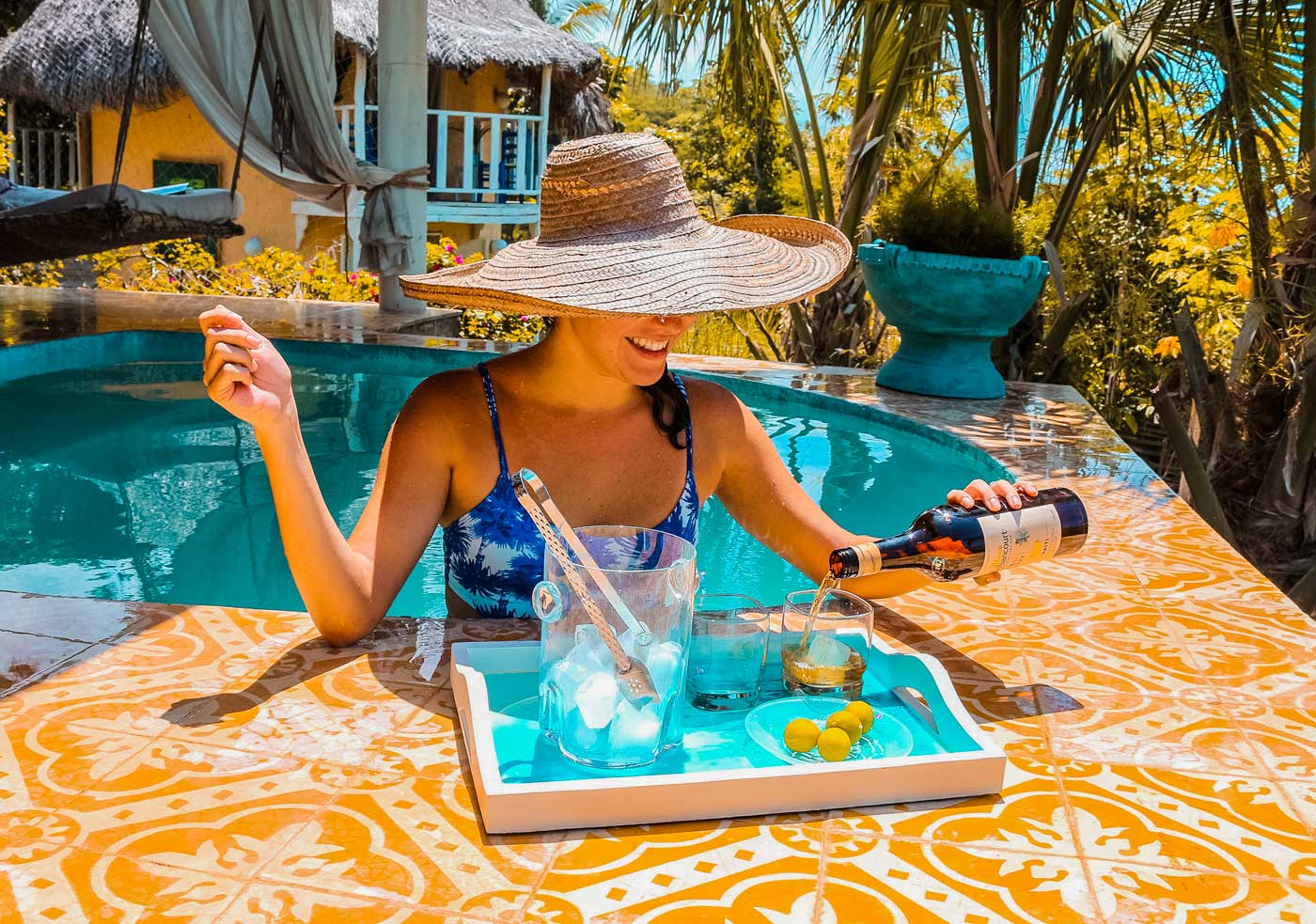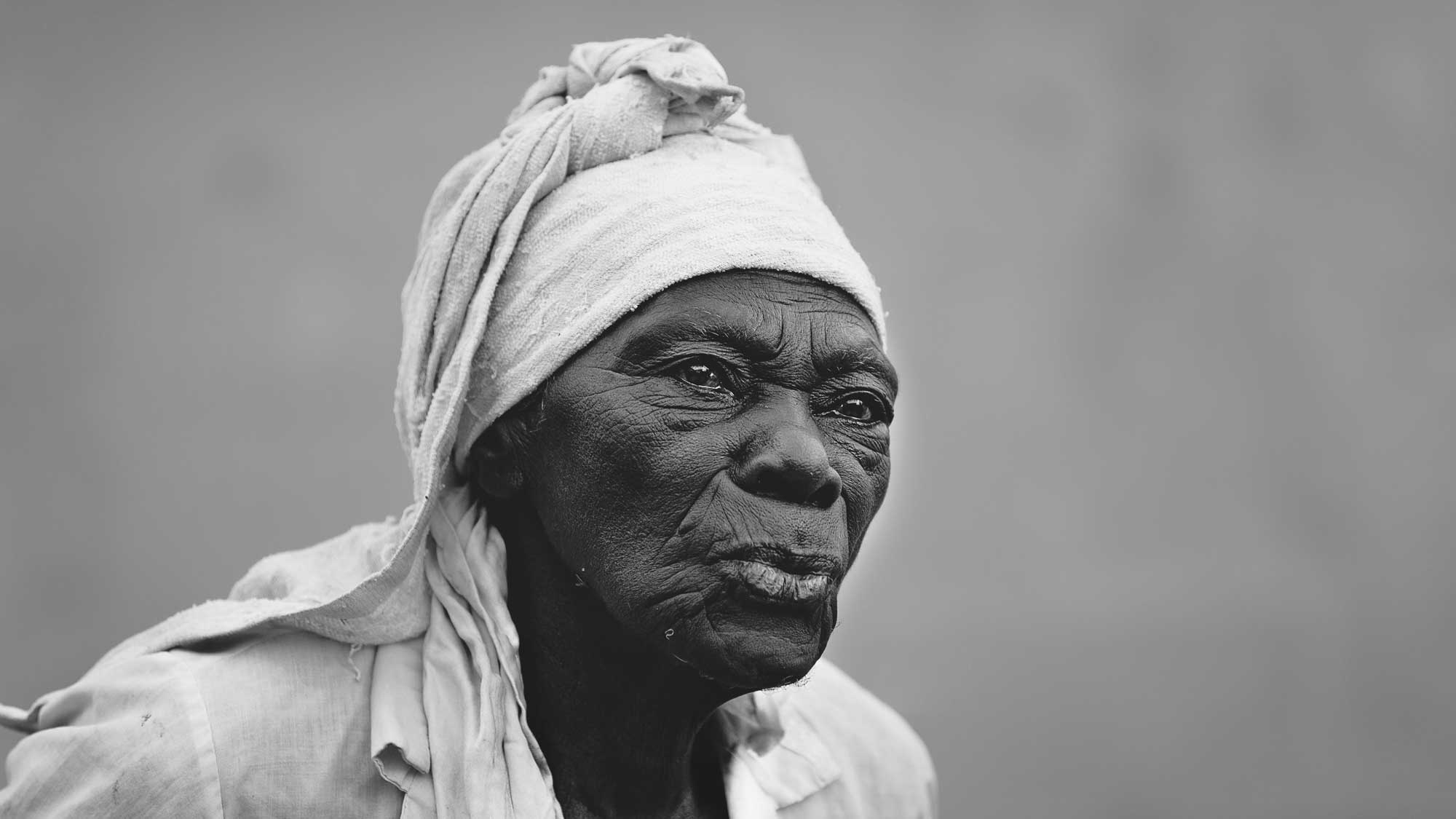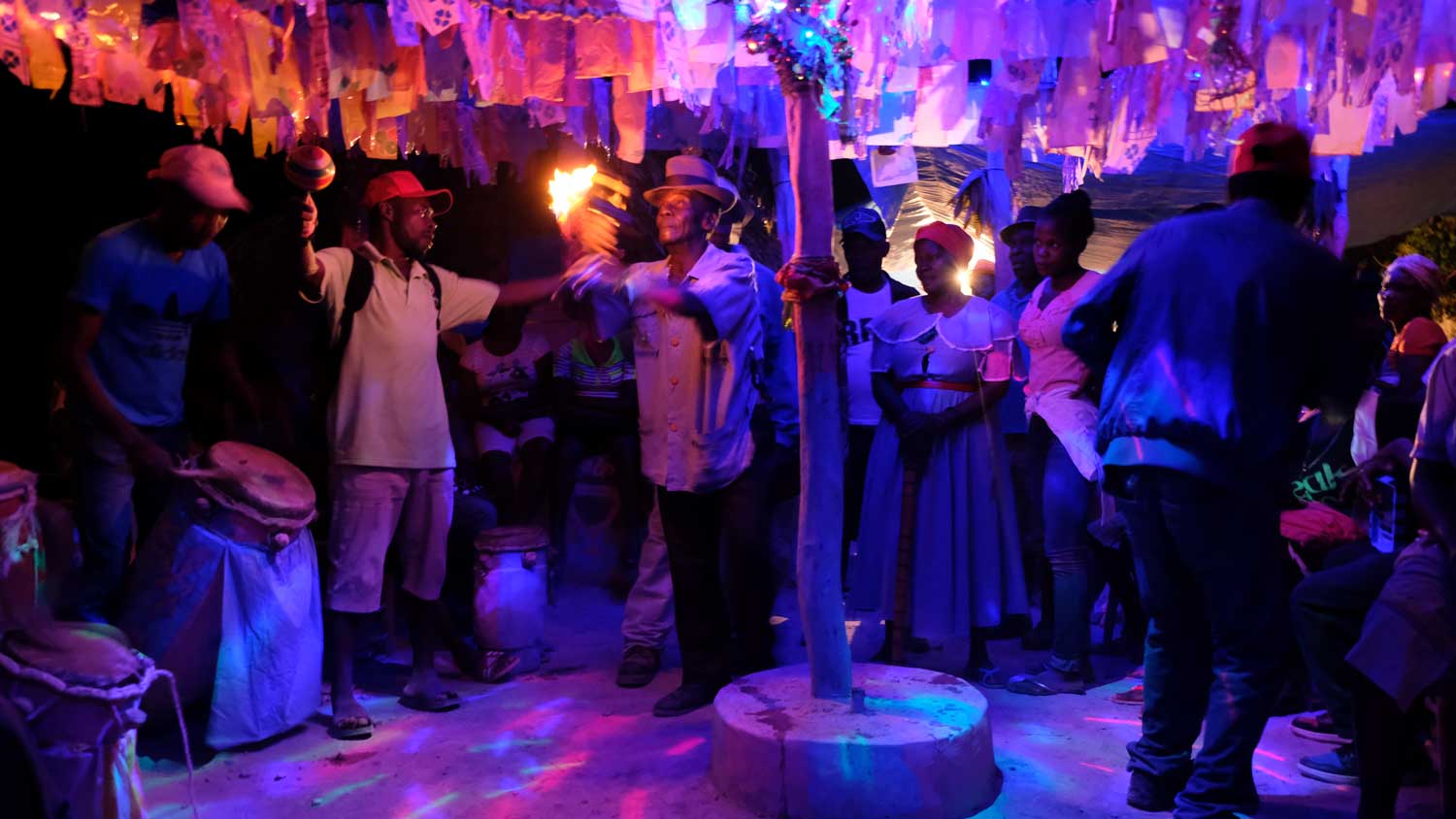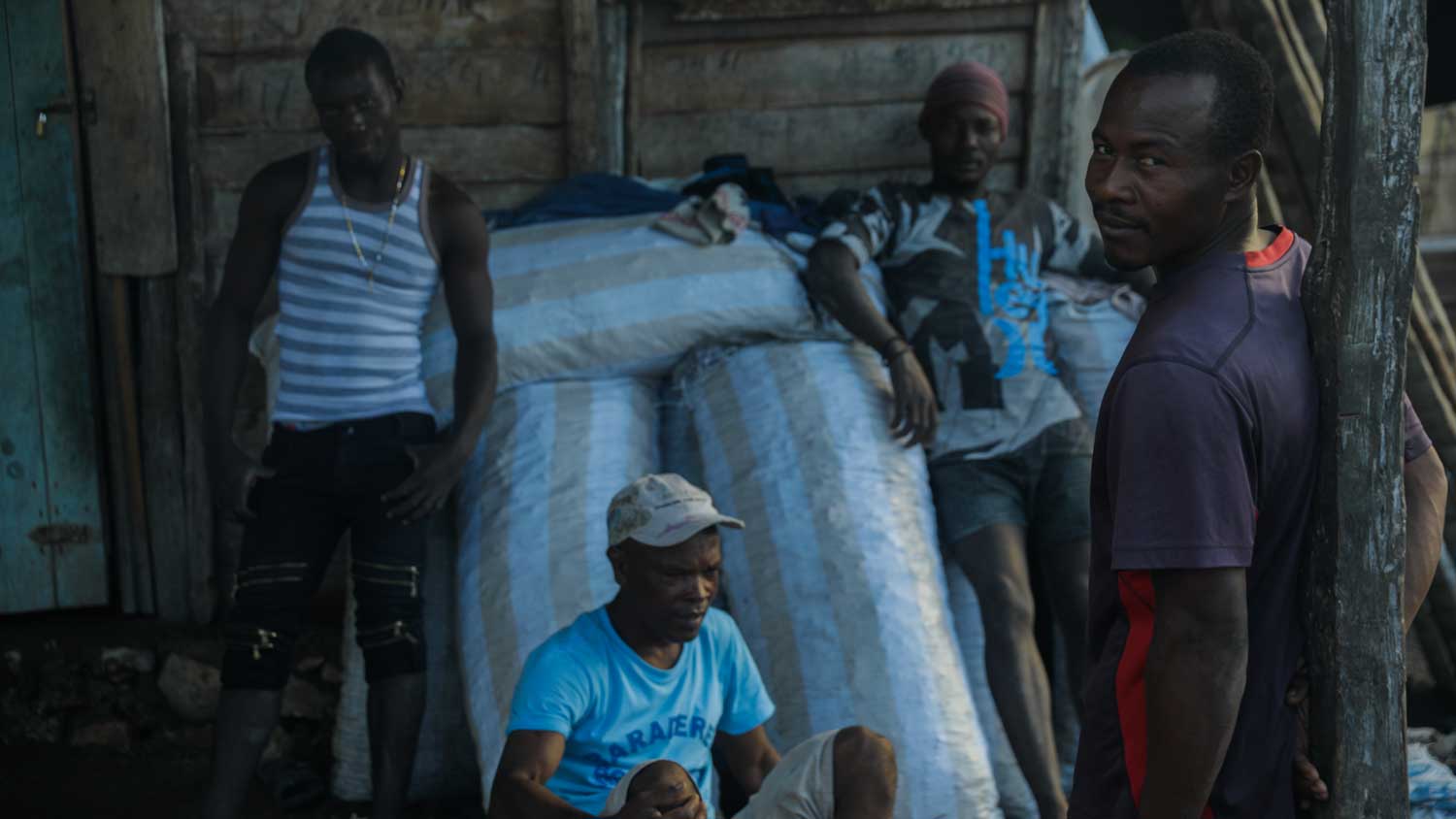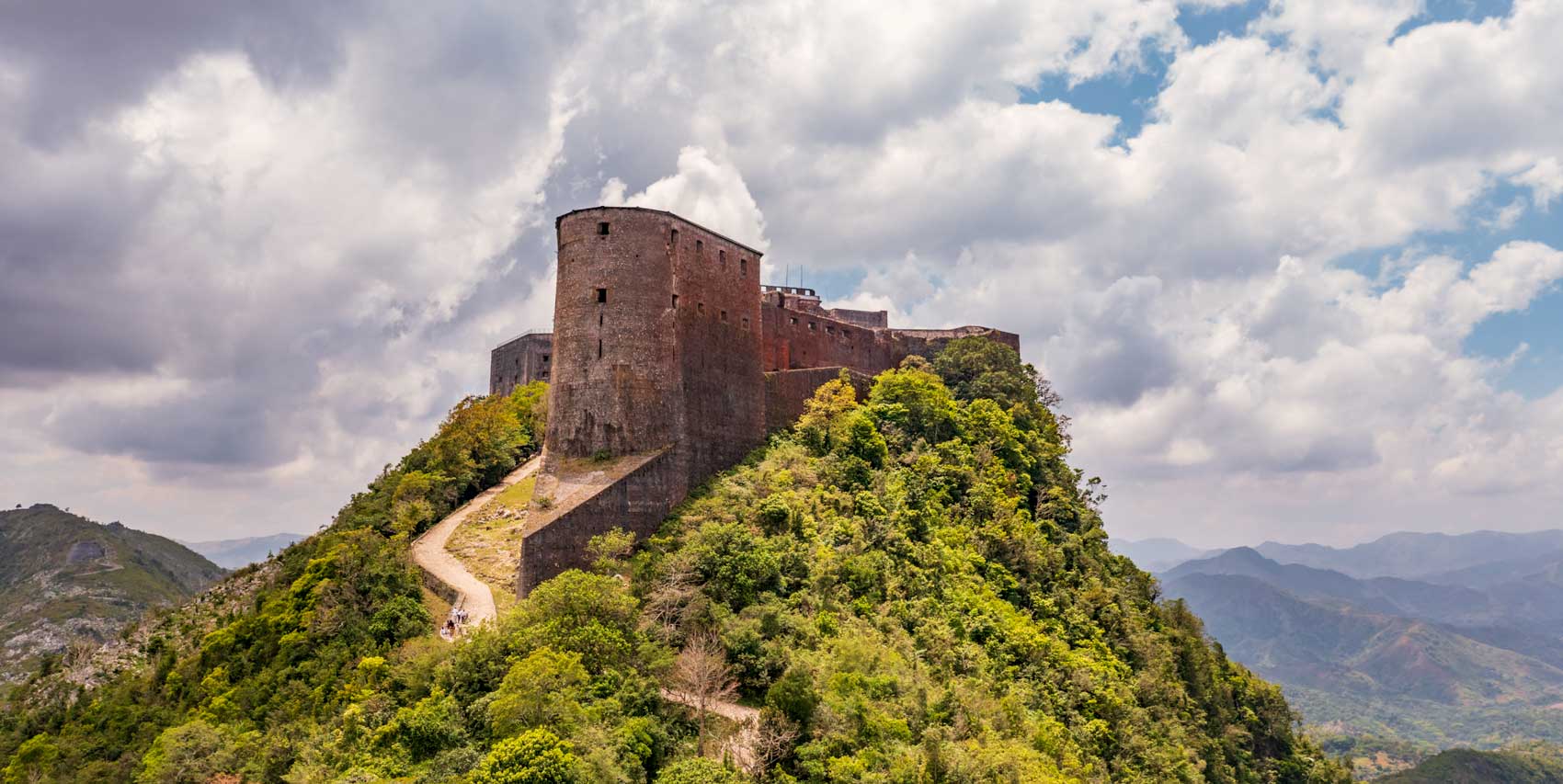
Photo: Jean Oscar Augustin
Climb to the Citadelle and See the Fortress That Defended a Nation
A fortress like no other—Citadelle Henri is the largest in the Americas, a testament to Haiti’s determination to defend its freedom at all costs.
Citadelle Henri, known to locals simply as La Citadelle, is the largest fortress in the Americas. Haitians call it the eighth wonder of the world, and once you reach the summit of Pic Laferrière, you’ll understand why.
The mountaintop fortress is massive, rising 130 feet from Bonnet à l’Évêque, at an elevation of 3,000 feet above sea level. From here, you’ll take in unparalleled views in every direction—over jungle-clad mountains, winding rivers, and the shimmering Caribbean Sea.
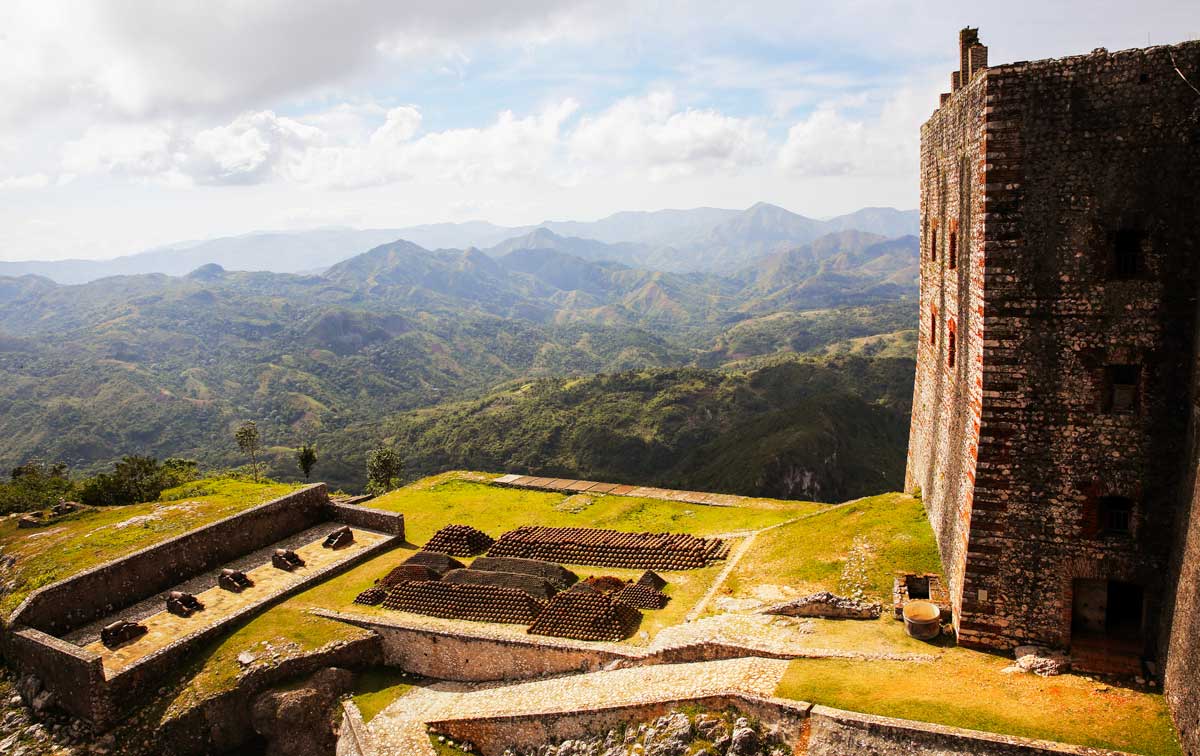
Photo: Angelo Miramonti
What You’ll See
Built to demonstrate the power of a newly independent Haiti, Citadelle Henri was also a defensive stronghold, designed to protect the country if the French attempted to retake the nation. The 100,000-square-foot fortress includes vast cisterns and storehouses, meant to supply the royal family and up to 5,000 people with enough food and water to withstand a year-long siege.
Armed with over 150 cannons, mostly captured from the English, French, and Spanish, the fortress once stored more than 50,000 cannonballs. With walls over 13 feet thick and rising 100 feet high, the Citadelle was built to be impenetrable.
Fortunately, the French never returned, the canons were never fired in combat, and the Citadelle is much the same today as it was 200 years ago. In recent years, restoration efforts have been supported by organizations like the World Monuments Fund, which works to protect this historic site for future generations.
Visitors can spend hours exploring the site—walking its ramparts, drawbridges, cannon batteries, and long corridors designed to outwit invaders. Many windows and ramparts drop off into sheer cliffs, offering breathtaking views of northern Haiti.
Inside the courtyard, you’ll find a brand-new museum, an art gallery, and modern restrooms, along with a small gift shop selling drinks and postcards.
A National Icon
Citadelle Henri is Haiti’s most popular historic site, visited by both Haitians and travelers alike. It holds a visible place of pride in Haitian culture—you’ll see its distinct triangular shape on 5 HTG coins, 100 HTG bills, and even the covers of school textbooks.

Photo: Jean Oscar Augustin
The History Behind Citadelle Henri
Citadelle Henri was constructed between 1805 and 1820, following Haiti’s successful revolution, in which the formerly enslaved African-descended population overthrew French colonial rule and declared independence. It took 15 years and 20,000 people to build.
The fortress was part of a larger defensive network, which included Fort Jacques and Fort Ogé, all built to protect Haiti from future invasions by European forces from neighboring colonies. While earlier forts were constructed during the revolution itself, Henri Christophe ordered the construction of the Citadelle in 1805, just one year after independence, as a permanent stronghold against potential attacks.
Rising 130 feet above the mountaintop, the Citadelle not only provided strategic defense but also sent a clear message. Even from its base, the fortress offers uninterrupted views of the sea, but more importantly, it could be seen from miles offshore—a warning to any would-be invaders that Haiti was ready to defend itself.
Construction, personally overseen by Christophe, was completed in 1820, cementing the Citadelle’s place as one of the greatest military fortifications in the Americas. Today, it is not only a national symbol but also a UNESCO World Heritage Site, recognized for its historical and architectural significance.
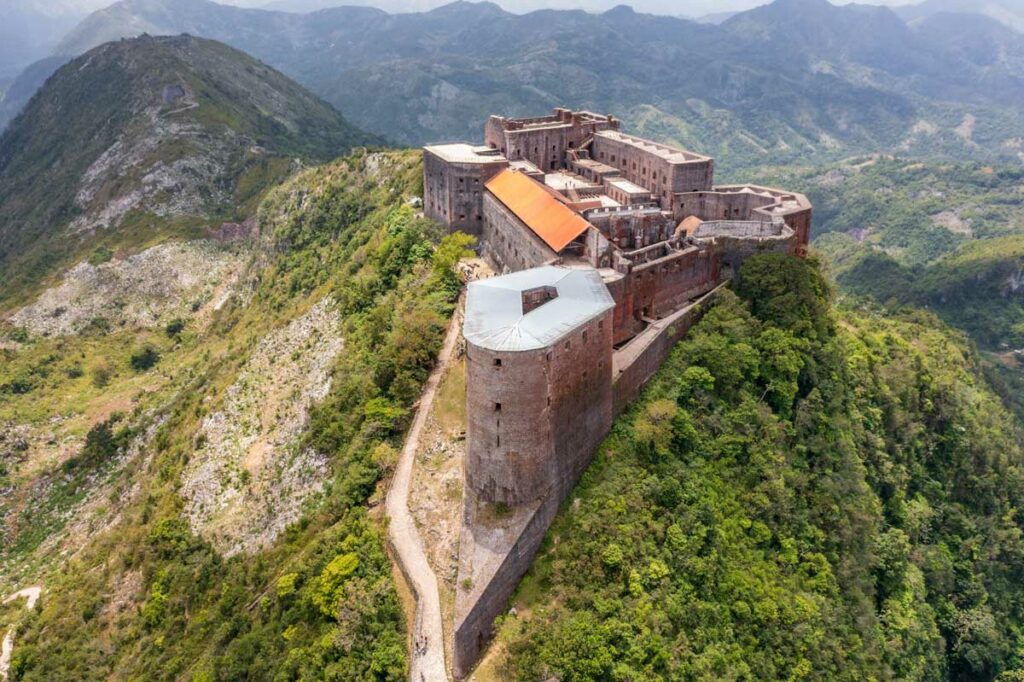
Photo: Jean Oscar Augustin
Getting there
The Citadelle is located in the town of Milot, just south of Cap-Haïtien, about a one-hour drive away.
The journey begins near the entrance to Sans-Souci Palace, where visitors must pay an entry fee of $10 USD. Here, you’ll find plenty of local guides offering tours of both Sans-Souci Palace and the Citadelle. Guide prices vary depending on your group size, but the fee is per person and covers both sites.
At the entrance, you’ll also find vendors selling drinks, snacks, and souvenirs—but be sure to bring cash, as you’ll need it for transportation, entry fees, tipping, and purchases. It’s also a good idea to bring water, especially if you plan to hike.
To reach the Citadelle’s summit, you have three options:
- Take a moto (motorbike taxi) for around $10 USD.
- Hike on foot (1 to 2 hours, depending on your fitness level).
- Ride on horseback ($15 USD).
The route from Sans-Souci to the Citadelle is only 4 miles (6.5 kilometers), but with an elevation gain of over 2,000 feet (700 meters), the climb is steep. Many visitors choose to stay overnight in one of the many hotels in Cap-Haïtien rather than making it a rushed trip. If you’re spending time in the city, be sure to check out the coolest things to do in Cap-Haïtien and beyond to make the most of your visit.
Written by Kelly Paulemon.
Published April 2019.
Updated March 2025.
Find Citadelle Henri
External Links
Check out the latest visitors reviews

Read more about the Citadelle on Wikipedia

Top things to see around Cap-Haïtien

Paradise for your inbox
Your monthly ticket to Haiti awaits! Get first-hand travel tips, the latest news, and inspiring stories delivered straight to your inbox—no spam, just paradise.







